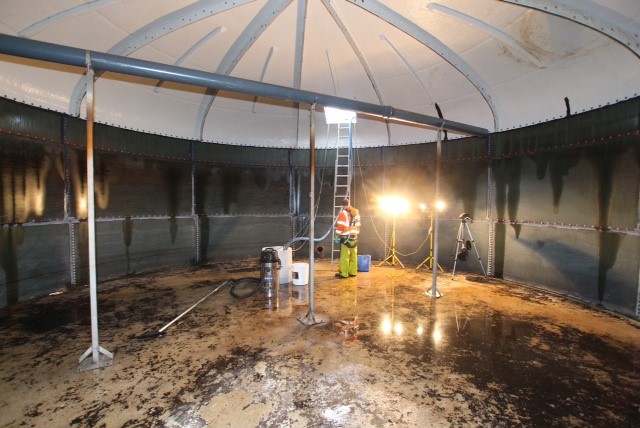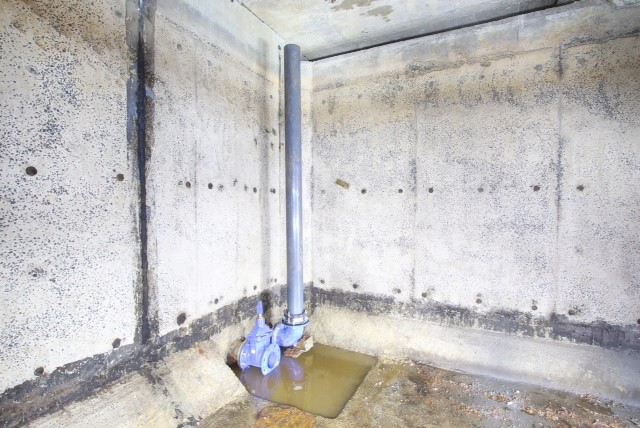The Council’s Water Services team have made good progress on the public water infrastructure recently. This includes the huge undertaking of reservoir cleaning at Telegraph (something that used to be done by a mainland contractor) and the commissioning of the new, innovative direct seawater intake for the Desalination Plant at Pelistry. Both of these projects have been completed for the most part by the in-house team and demonstrate the skills we have on the islands.
New Intake
The intake will provide St Mary's with a much needed source of raw water to ensure that we can deliver sufficient drinking water to the community at peak times. It will also reduce the use of costly filters and limit wear and tear on equipment caused by the deteriorating quality of water from the cliff-side boreholes. The new intake will be seasonal, with the pipe and pump being launched in April or May each year and dismantled in October. There has been a lot of work over the last 12 months to get the new intake ready and it is now in the final commissioning stages.
The location is remote and exposed to an easterly wind, and the pipework must pass over the rugged granite coastline into sufficiently deep water to ensure a suitable intake. The team have therefore taken every precaution to ensure the new intake is robust and safe. The pipe used is of a standard used for rigs and other offshore operations. The whole intake has been engineered to mitigate against risks to both the equipment itself and any marine traffic. It has been necessary to include floats and navigation buoys to ensure high visibility in all weather conditions, which will inevitably be visible from the shoreline. The requirement for floats and buoys is on the advice of the Marine Management Organisation, Maritime and Coastguard Agency and Trinity House and also follows consultation with the Harbour Master.
Since launching the pipework last weekend, there have been lots of sightings of seals in the bay so they do not appear to be affected by the installation. A visual inspection of the seabed has also been undertaken to ensure there has been no impact on marine life such as, for example, Eelgrass.

Telegraph Reservoir Cleaning & Repairs
The cleaning process was carried out on 4 individual tanks, using pressure washers and then chlorination.
The team allowed the individual tanks to empty (through normal usage so there was minimal wastage of water) to a level that maintained an airlock-free distribution network – this maintained the required pressure in the system to ensure that customers were not affected.
The two steel plate coated round tanks (which were installed in the early 1990s) were drained, cleaned and refilled. Each of these has a capacity of 227m³. The process was repeated on the much older concrete construction tanks, each with a capacity of 230m³. Whilst draining and isolating the concrete tanks, the team came across faulty valving and pipework. This meant they had to carry out the replacement of a 6" cast iron valve inside the tank whilst it was "live" (fully open and under pressure whist the works were carried out).
In total 1.4 tonnes of the original cast iron water pipes and valving were removed and replaced. These were replaced with steel coated fittings and UPVC pipework, while all the connections were also replaced to future proof the system and reduce operating costs.
Before


During the cleaning process

New valve and pipes

